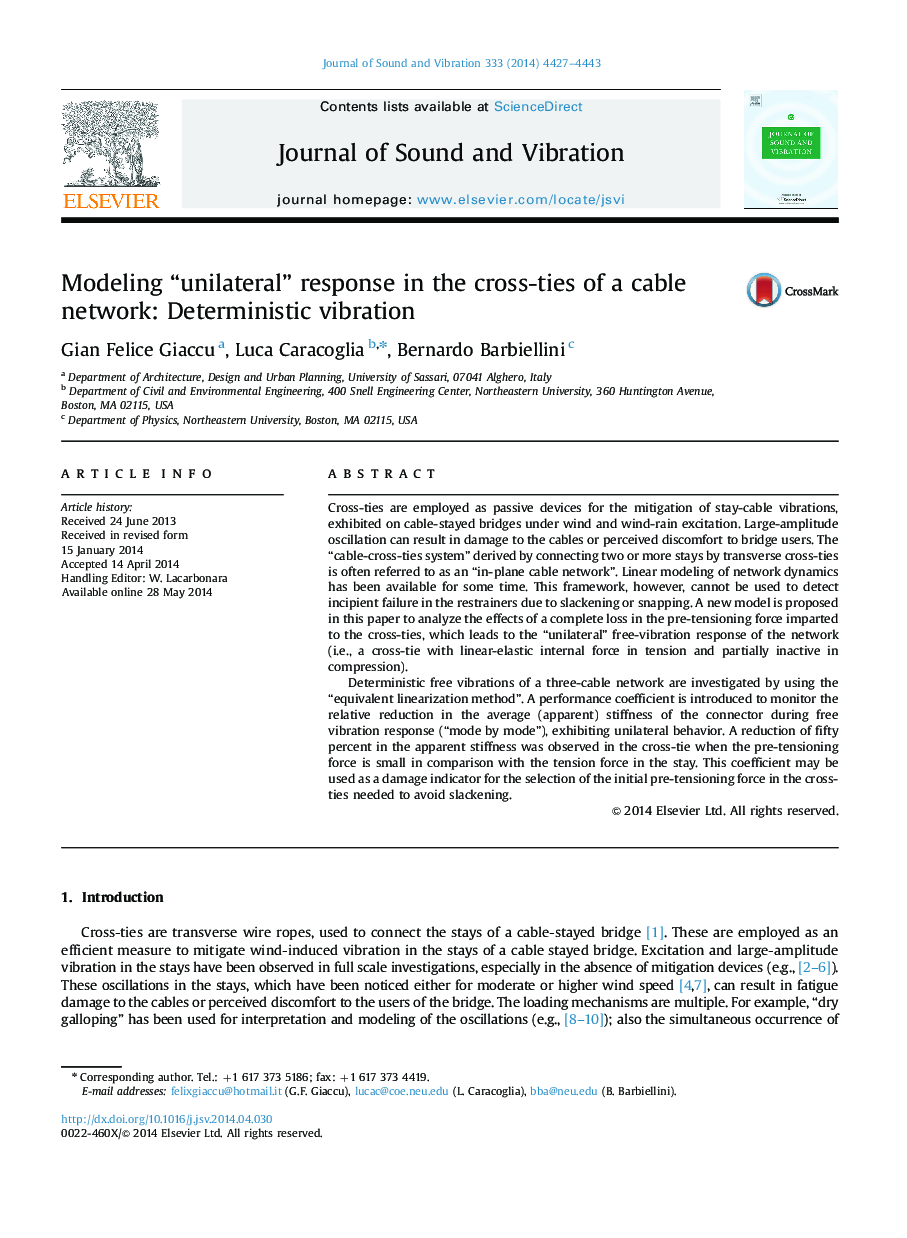| کد مقاله | کد نشریه | سال انتشار | مقاله انگلیسی | نسخه تمام متن |
|---|---|---|---|---|
| 287473 | 509568 | 2014 | 17 صفحه PDF | دانلود رایگان |

• Cross-ties and cable networks are used to mitigate wind-induced stay vibration.
• A model for nonlinear dynamics of in-plane cable networks is presented.
• A unilateral stiffness model is used to replicate cross-tie slackening.
• The model is applied to the study of an existing cable-cross-tie system.
• Performance coefficient is used to assess amplitude-dependent stiffness reduction.
Cross-ties are employed as passive devices for the mitigation of stay-cable vibrations, exhibited on cable-stayed bridges under wind and wind-rain excitation. Large-amplitude oscillation can result in damage to the cables or perceived discomfort to bridge users. The “cable-cross-ties system” derived by connecting two or more stays by transverse cross-ties is often referred to as an “in-plane cable network”. Linear modeling of network dynamics has been available for some time. This framework, however, cannot be used to detect incipient failure in the restrainers due to slackening or snapping. A new model is proposed in this paper to analyze the effects of a complete loss in the pre-tensioning force imparted to the cross-ties, which leads to the “unilateral” free-vibration response of the network (i.e., a cross-tie with linear-elastic internal force in tension and partially inactive in compression).Deterministic free vibrations of a three-cable network are investigated by using the “equivalent linearization method”. A performance coefficient is introduced to monitor the relative reduction in the average (apparent) stiffness of the connector during free vibration response (“mode by mode”), exhibiting unilateral behavior. A reduction of fifty percent in the apparent stiffness was observed in the cross-tie when the pre-tensioning force is small in comparison with the tension force in the stay. This coefficient may be used as a damage indicator for the selection of the initial pre-tensioning force in the cross-ties needed to avoid slackening.
Journal: Journal of Sound and Vibration - Volume 333, Issue 19, 14 September 2014, Pages 4427–4443